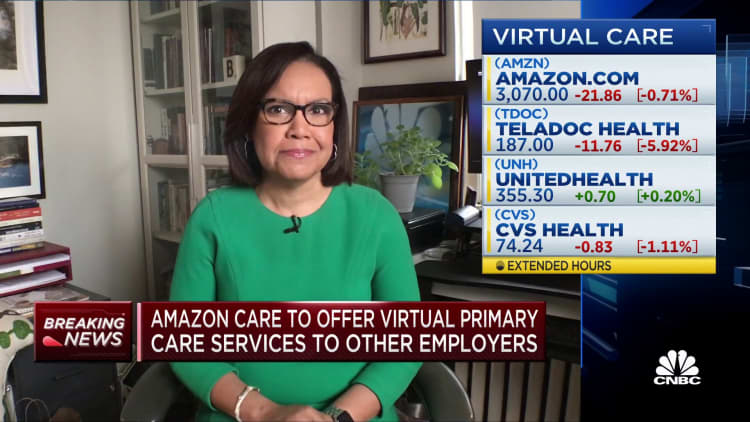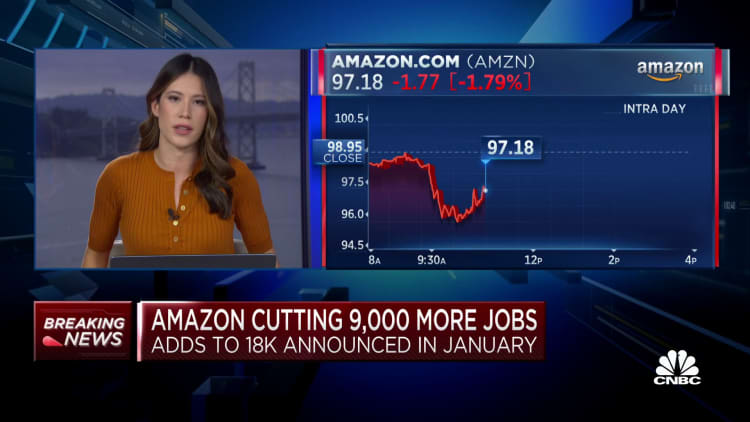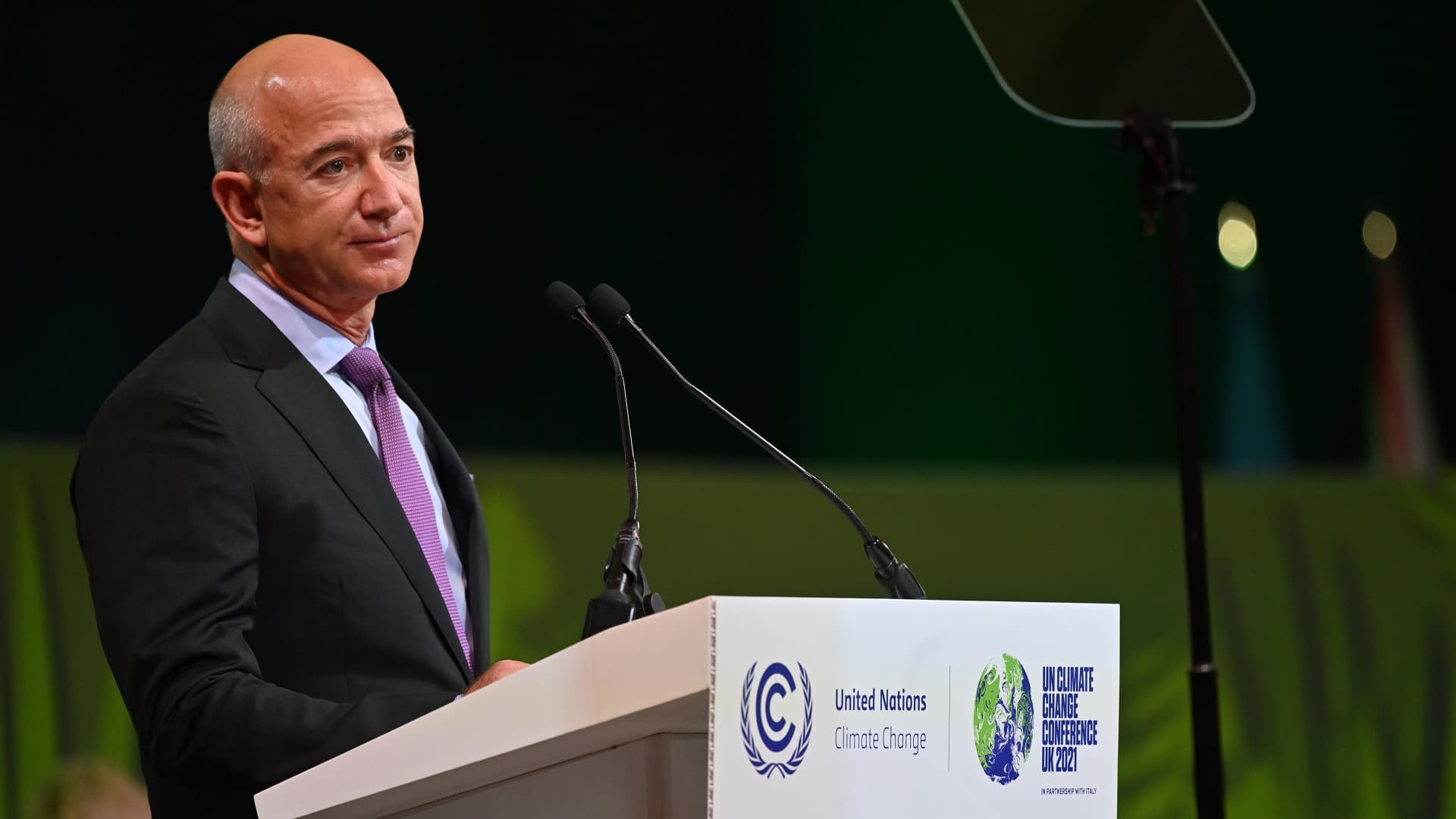
Amazon CEO Jeff Bezos speaks during an Action on Forests and Land Use event on day three of COP26 at SECC on November 2, 2021 in Glasgow, United Kingdom.
Paul Ellis | Getty Images
When Amazon announced just over two years ago that founder and then-CEO Jeff Bezos would turn the helm over to former cloud boss Andy Jassy, few investors or analysts reacted with much concern.
Jassy, a close confidant of Bezos, was known as an Amazon lifer and a celebrated figure inside the company and across the industry because he launched Amazon Web Services, which became one of the most valuable businesses in the world. Analysts at Wedbush practically yawned at the move, saying the transition would likely be “seamless and largely inconsequential.”
Unfortunately for Jassy, his short tenure at the helm has been all too eventful.
Since Jassy officially succeeded Bezos in July 2021, Amazon has experienced its most turbulent period since the dot-com crash. Last year marked its slowest year for revenue growth as a public company, and Jassy has been forced to guide Amazon through a series of cost-cutting measures that nobody predicted would be necessary when business was booming through the Covid pandemic.
Amazon shares have plunged by 44% since July 5, 2021, Jassy’s first day as CEO. And on Monday, Jassy said the company is cutting another 9,000 jobs, adding to the 18,000 layoffs that were announced in January. While the cuts represent a small percentage of Amazon’s corporate workforce, they still represent a shocking turn for a company that was in non-stop growth phase for the better part of 25 years.
“Given the uncertain economy in which we reside, and the uncertainty that exists in the near future, we have chosen to be more streamlined in our costs and headcount,” Jassy wrote in an email to employees.
Much of Jassy’s unfortunate circumstance can be attributed to bad timing — historically high inflation pushed the Federal Reserve to raise rates, crippling growth across the U.S. tech sector. But whether it’s bad luck, his own missteps or some combination of the two, Jassy is an unenviable position as only the second CEO in Amazon’s history.
Bezos, his predecessor, transformed Amazon from a bookseller into a retail, cloud computing and advertising giant that became known for an inventive, startup-like atmosphere. On Bezos’ watch, the company turned out groundbreaking inventions like the Kindle e-reader and the Echo smart speaker, and invested in new verticals like original content, health care and brick-and-mortar grocery stores.
So far, the Jassy era has been all about belt tightening and retrenchment from some of Amazon’s more experimental pursuits.
For the past year, Jassy has been trimming expenses across the company. Many unproven bets, like Amazon’s Scout delivery robot, a virtual tours service, Care telehealth program, and a video-calling device for kids were axed. He made the decision to shutter all of its 4-star, Pop Up and Books stores and, earlier this year, announced Amazon would close some Fresh supermarkets and Go cashierless convenience marts. Drone delivery, one of Bezos’ pet projects, is struggling mightily to get off the ground as it, too, faces cost cuts.
The pandemic-driven e-commerce boom pushed Amazon to double its physical footprint between 2020 and 2022. The stock soared, along with head count. But as the economy reopened and online sales stalled, Amazon found itself saddled with more facilities than it could efficiently put to use and eventually moved to close, cancel or delay the opening of many new warehouses.
Earlier this month, Amazon paused construction of the second phase of its sprawling new campus in Arlington, Virginia, dubbed HQ2. Other construction projects in Nashville, Tennessee, and Bellevue, Washington, have also been put on hold, in part because much of Amazon’s corporate workforce has been working remotely since the pandemic.
Jassy is under immense pressure to prove he can get expenses under control. But in order to revive the enthusiasm that Bezos drove into Amazon’s culture, he’s eventually got to find new engines for growth.
In its fourth-quarter earnings report, Amazon barely eked out a profit, and the company issued disappointing guidance for the first quarter, with revenue growth expected to be stuck in the mid-single digits.
It’s not exactly what Bezos had in mind, when he told employees in early 2021 about the coming CEO transition.
“Amazon couldn’t be better positioned for the future,” Bezos wrote at the time in a letter to staffers. “We are firing on all cylinders, just as the world needs us to. We have things in the pipeline that will continue to astonish.”













